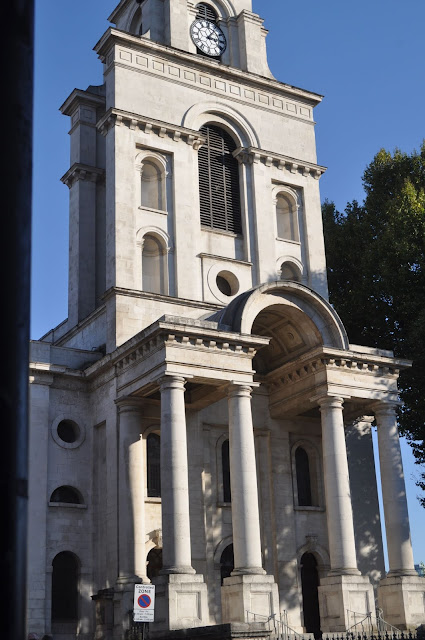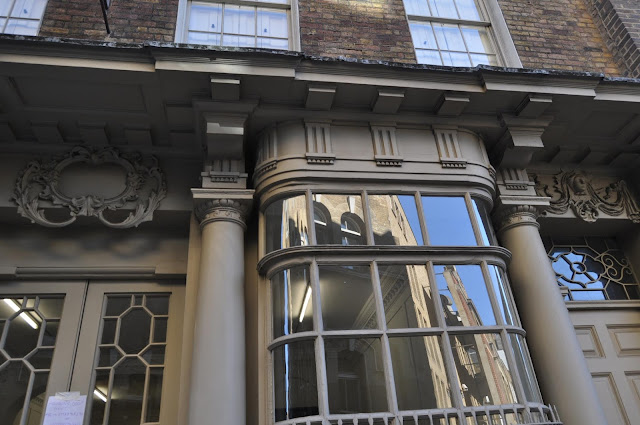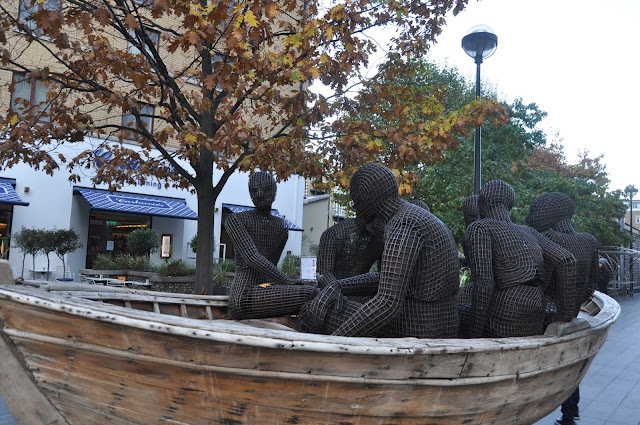Our highly knowledgeable and enthusiastic Guide was Tim Kidd, City of London and Blue Badge Guide and Lecturer of Blue Bowler, bespoke London walks.

Tim began by telling us that women often did not gain recognition in the past for their efforts even though they were there in the background performing important roles. Within the Huguenot community men were often front of house while the women were behind the scenes raising invoices and looking after the accounts, to name just two of the tasks they frequently undertook.
- Huguenot shopfront -
Rose Brune
The first lady we were introduced to on our tour took us far back into the medieval city of London when the Spitalfields area was home to a monastery dedicated to St Mary outside the city's walls. It was here Rose Brune and her husband bought some land to build a monastery in 1197. As part of their requirements the monks vowed to look after the destitute and for many poor who had travelled down to London, the monastery would be where they would stop for hospitality. Over time St Mary's Hospital and the surrounding area was shortened to 'Spital-fields and so its name was born.
Henrietta Barnett
Our next lady gained a place on our list because she and her husband set up Toynebee Hall to support the East End's poor. They gave Ox-bridge graduates the opportunity to come into the East End after they finished their degrees to live and help locals. The service still exists and offers a library service.
Tracey Emin
Modern day rebel of the art world, her artwork has over time shaken up established views about what art is and has encouraged people to reflect on the act of looking.
The Nuns of Spitalfields
We passed outside the former home of the "deserving poor". In the 1800s after the Irish famine a mass emigration of Irish left Ireland to escape starvation and disease. Many ended up in Spitalfields, often destitute, the nuns provided a night's accommodation for a day's work.
Lilian Knowles
Our next stop was outside a student accommodation that had been named after one of the London School of Economics alumni. A pioneering female academic, the first female professor of Economic History at LSE, and first female Dean of Faculty in the University of London. At Cambridge she achieved a double first in History and Law coming ‘equal to 2’ in the Law Tripos Part 1 in 1894. At that time women like Lilian were allowed to study alongside men at Oxford and Cambridge but were denied the right to be awarded a degree. This didn't stop Lilian who after showing such enormous ability in Economic history was offered a job by the London School of Economics. After she died her husband said of her, "she held that she was doing more good to the cause (female equality) by showing that she, a woman, could do a man’s job as well as any male creature and better than most."
Our tour took us to more sites associated with celebrated women before ending where it began outside the fabulous Christ Church. My sis and I had learnt loads and enjoyed our walkabout immensely.
Click here to find out more about the Huguenot Festival.
Best wishes
Sarah xx
 |
Sarah Agnew
Blogger, Modern Bric a Brac
|









